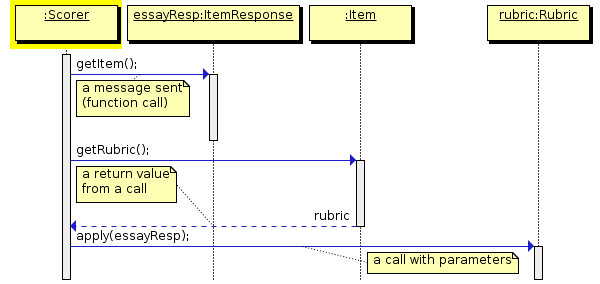

It also helps me to identify significant methods/services, such as checking to see if the applicant already exists as a student, which my system must support. I will often develop a system-level sequence diagram with my stakeholders to help to both visualize and validate the logic of a usage scenario.
#Message sequence diagram how to#
Figure 3 shows the logic for how to enroll in a seminar. Figure 2 depicts a sequence diagram for the detailed logic of a service to determine if an applicant is already a student at the university. Figure 1 depicts a UML sequence diagram for the Enroll in University use case, taking a system-level approach where the interactions between the actors and the system are shown. This includes web-services as well as business transactions implemented by a variety of technologies such as CICS/COBOL or CORBA-compliant object request brokers (ORBs). A service is effectively a high-level method, often one that can be invoked by a wide variety of clients. One way to think of sequence diagrams, particularly highly detailed diagrams, is as visual object code. Sequence diagrams can be used to explore the logic of a complex operation, function, or procedure. For example, a student enrolls in the university, and then immediately enrolls in three seminars. The logic of a usage scenario may also be a pass through the logic contained in several use cases.
#Message sequence diagram plus#
It may also be one entire pass through a use case, such as the logic described by the basic course of action or a portion of the basic course of action, plus one or more alternate scenarios. The logic of a usage scenario may be part of a use case, perhaps an alternate course. A usage scenario is a description of a potential way your system is used.

Sequence diagrams, along with class diagrams and physical data models are in my opinion the most important design-level models for modern business application development.Sequence diagrams are typically used to model: Other dynamic modeling techniques include activity diagramming, communication diagramming, timing diagramming, and interaction overview diagramming. Sequence diagrams are the most popular UML artifact for dynamic modeling, which focuses on identifying the behavior within your system. UML sequence diagrams model the flow of logic within your system in a visual manner, enabling you both to document and validate your logic, and are commonly used for both analysis and design purposes.


 0 kommentar(er)
0 kommentar(er)
